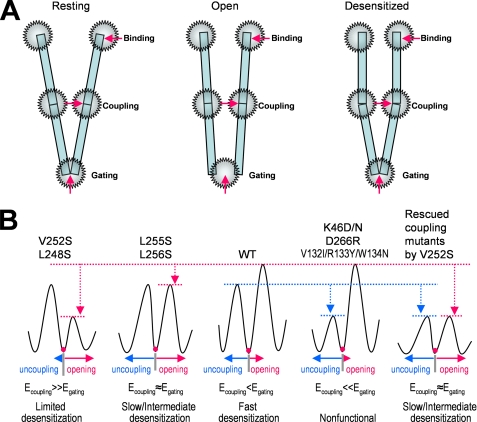FIGURE 8.
Channel opening and desensitization is determined by the balance of binding, coupling, and gating regions. A, a schematic presentation of three energetic hot spots for channel function: binding, coupling, and gating. In the resting state, the coupling region is intact, and the channel gate is closed (left). Upon agonist binding, the binding energy induces conformational changes of the receptor to overcome the gating energy barrier to open the channel through the stressed coupling region (middle panel). The stressed coupling region can break, which will cause uncoupling between binding site and channel gate. This uncoupling is desensitization (right). The likelihood of uncoupling depends on the relative strength of coupling and gating machinery as illustrated in B. B, putative energy profile in coupling and gating regions and their relationship to desensitization in the wild type and mutant receptors. Egating, the energy needed to break the gating energy barrier to open the channel; Ecoupling, energy needed to break the coupling energy barrier to desensitize the receptor. Thus, it is the relative strength of coupling energy and gating energy determine the degree and rate of desensitization.

